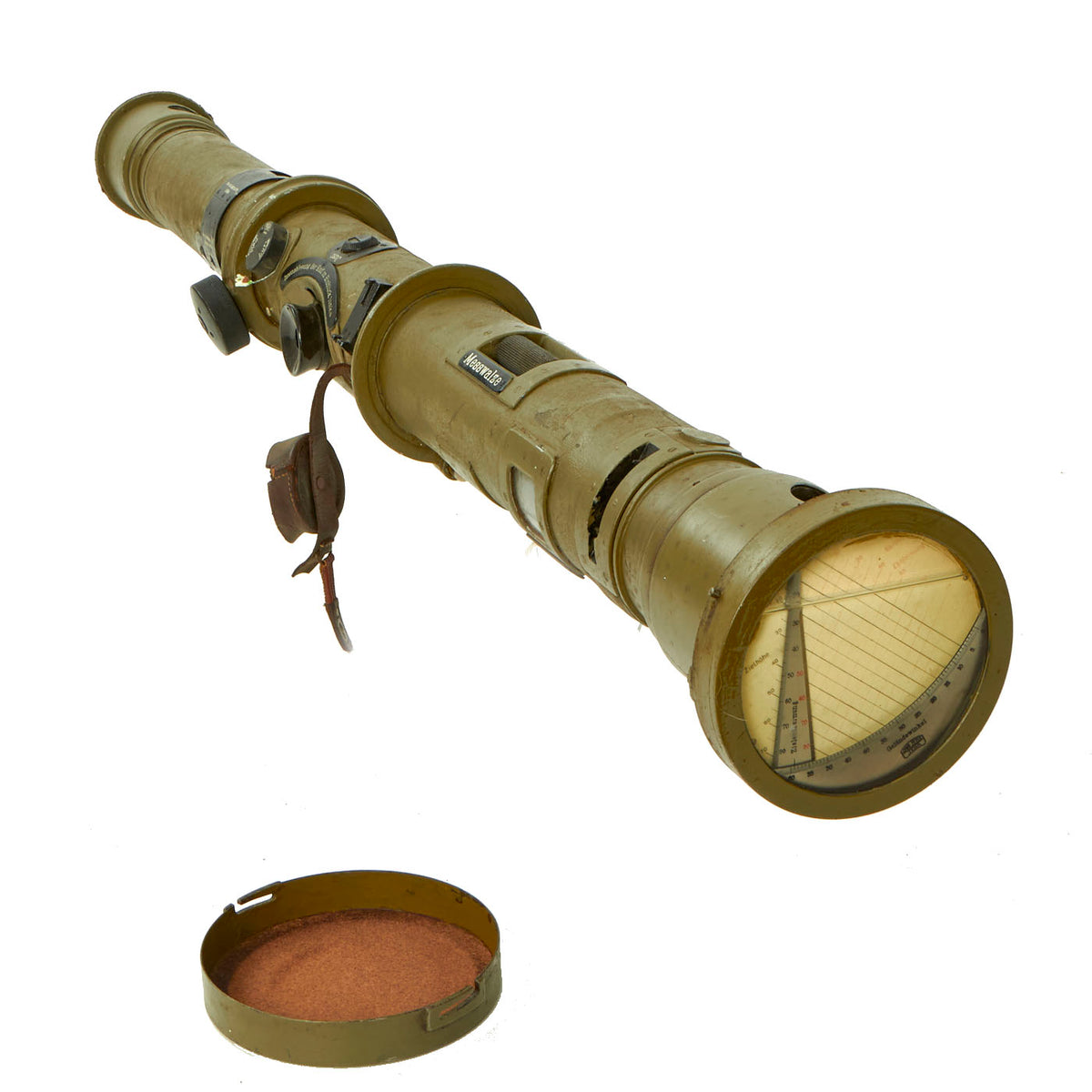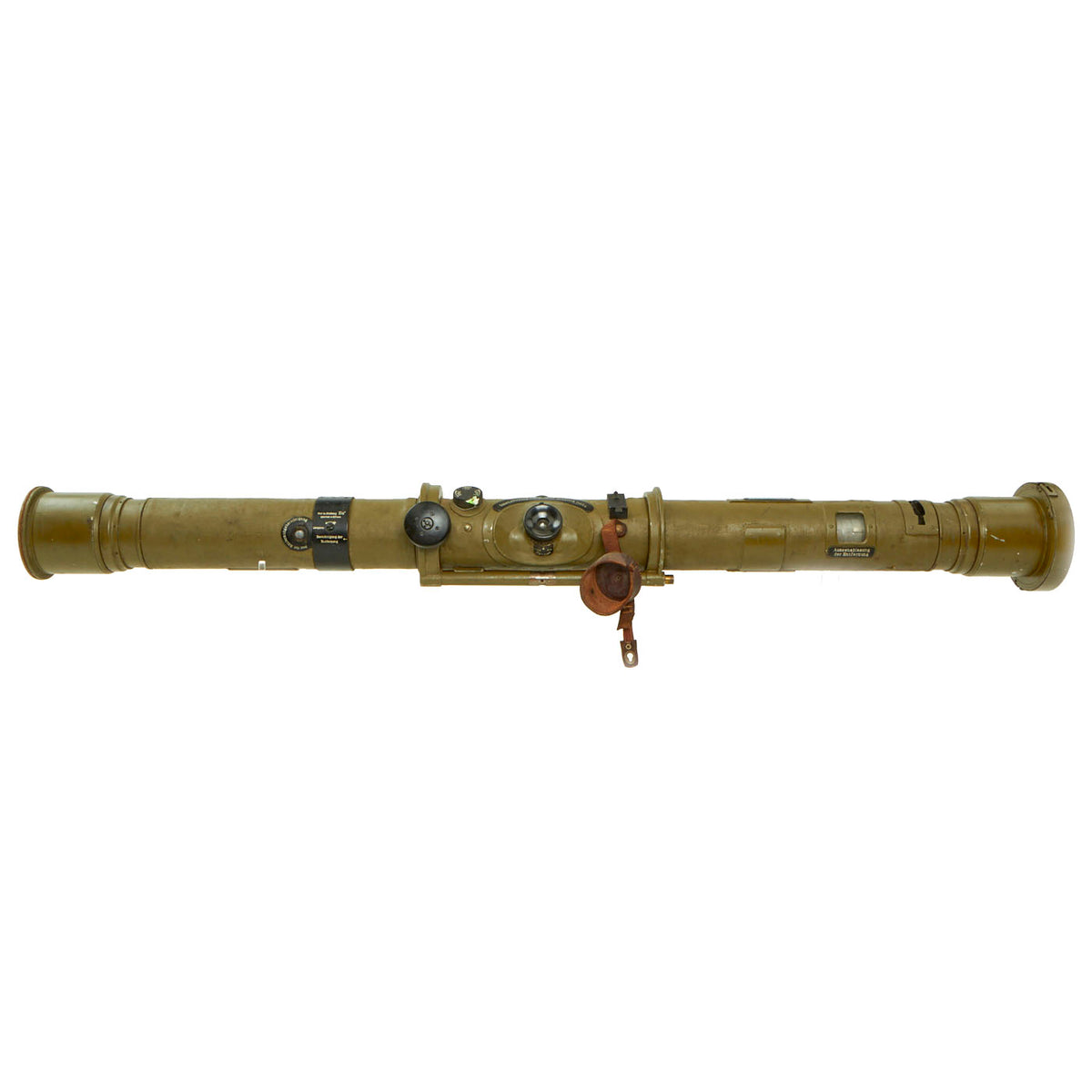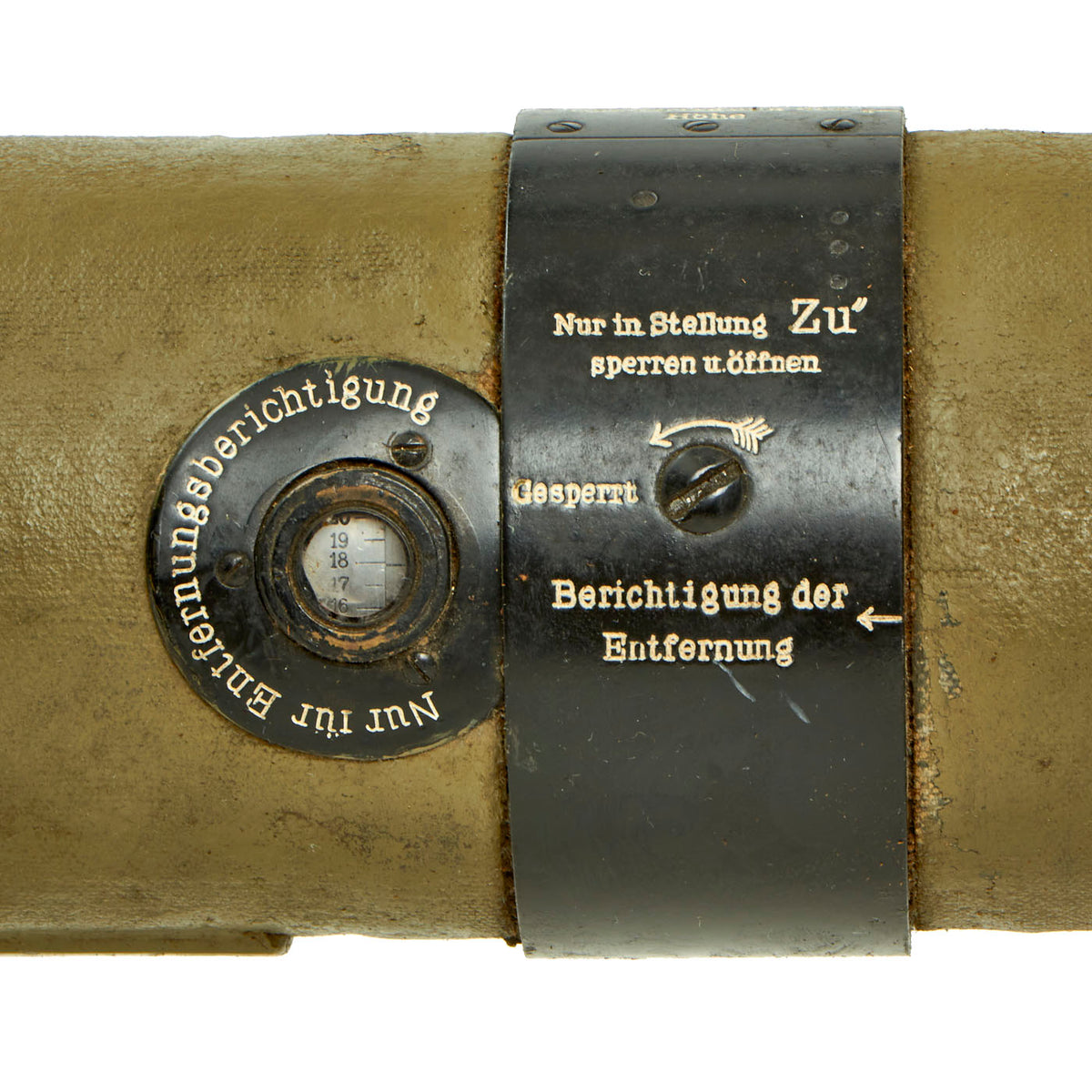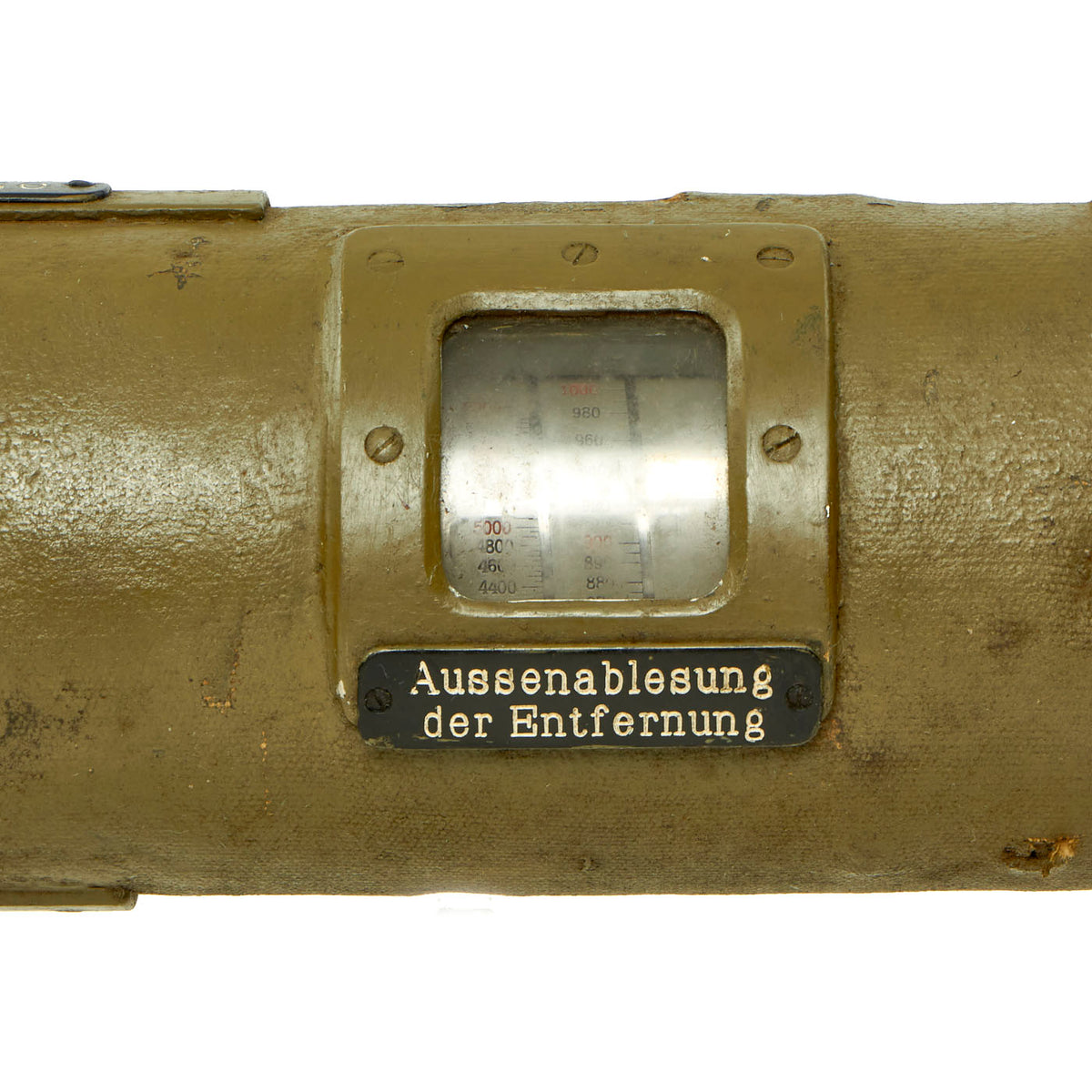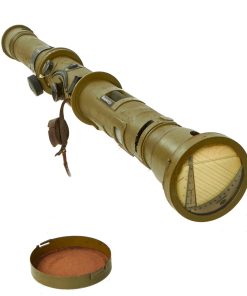Original German WWII Carl Zeiss Jena 12x 1.25m Coincidence Rangefinder Original Items
$ 695,00 $ 208,50
Original Item: Only One Available. A coincidence rangefinder or coincidence telemeter is a type of rangefinder that uses mechanical and optical principles to allow an operator to determine the distance to a visible object. There are subtypes split-image telemeter, inverted image, or double-image telemeter with different principles how two images in a single ocular are compared. Coincidence rangefinders were important elements of fire control systems for long-range naval guns and land-based coastal artillery circa 1890–1960. They were also used in rangefinder cameras.
A stereoscopic telemeter looks similar, but has two eyepieces and uses a different principle, based on binocular vision. The two can normally be distinguished at a glance by the number of eyepieces, one for a coincidence rangefinder, and 2 for a stereoscopic one.
This is a great example of a rare and impressive optical instrument made just before the Second World War. It is a Type 68 Entfernungsmesser or Rangefinder of 12x magnification with a 1.25 meter base length. It was designed to accurately assess the distance of enemy forces from the observer. With a single eyepiece, it is of the coincidence telemeter type.
Manufactured by CARL ZIESS of JENA and well marked all over with use instructions in German (not Finnish as many rangefinders are found on the collectors market).
The Rangefinder itself is beautifully painted in the original green color and measures 54 ½” in overall length, the measurement from lens center to lens center is 125 cms (1.25 Metres).
A wonderful example and comes more than ready for further research and display.
Fast Shipping with Professional Packaging
Thanks to our longstanding association with UPS FedEx DHL, and other major international carriers, we are able to provide a range of shipping options. Our warehouse staff is expertly trained and will wrap your products according to our exact and precise specifications. Prior to shipping, your goods will be thoroughly examined and securely secured. We ship to thousands clients each day across multiple countries. This shows how we're dedicated to be the largest retailer on the internet. Warehouses and distribution centres can be located throughout Europe as well as the USA.
Note: Orders with more than one item will be assigned a processing date depending on the item.
Before shipping before shipping, we'll conduct a thorough inspection of the items you have ordered. Today, the majority of orders will be delivered within 48 hours. The delivery time will be between 3-7 days.
Returns
The stock is dynamic and we cannot completely manage it because multiple stakeholders are involved, including our factory and warehouse. So the actual stock may alter at any time. It's possible that you may not receive your order once the order has been made.
Our policy is valid for a period of 30 days. If you don't receive the product within 30 days, we are not able to issue a refund or an exchange.
You can only return an item if it is unused and in the same state as the day you received it. You must have the item in its original packaging.
Related products
Uncategorized
Uncategorized
Uncategorized
Uncategorized
Uncategorized
Uncategorized
Uncategorized
Uncategorized
Uncategorized
Band of Brothers ORIGINAL GERMAN WWII Le. F.H. 18 10.5cm ARTILLERY PIECE Original Items
Uncategorized
Uncategorized
Uncategorized
Armored Burgonet Helmet & Polearm from Scottish Castle Leith Hall Circa 1700 Original Items
Uncategorized
Uncategorized
Uncategorized
Uncategorized
Uncategorized
Uncategorized
